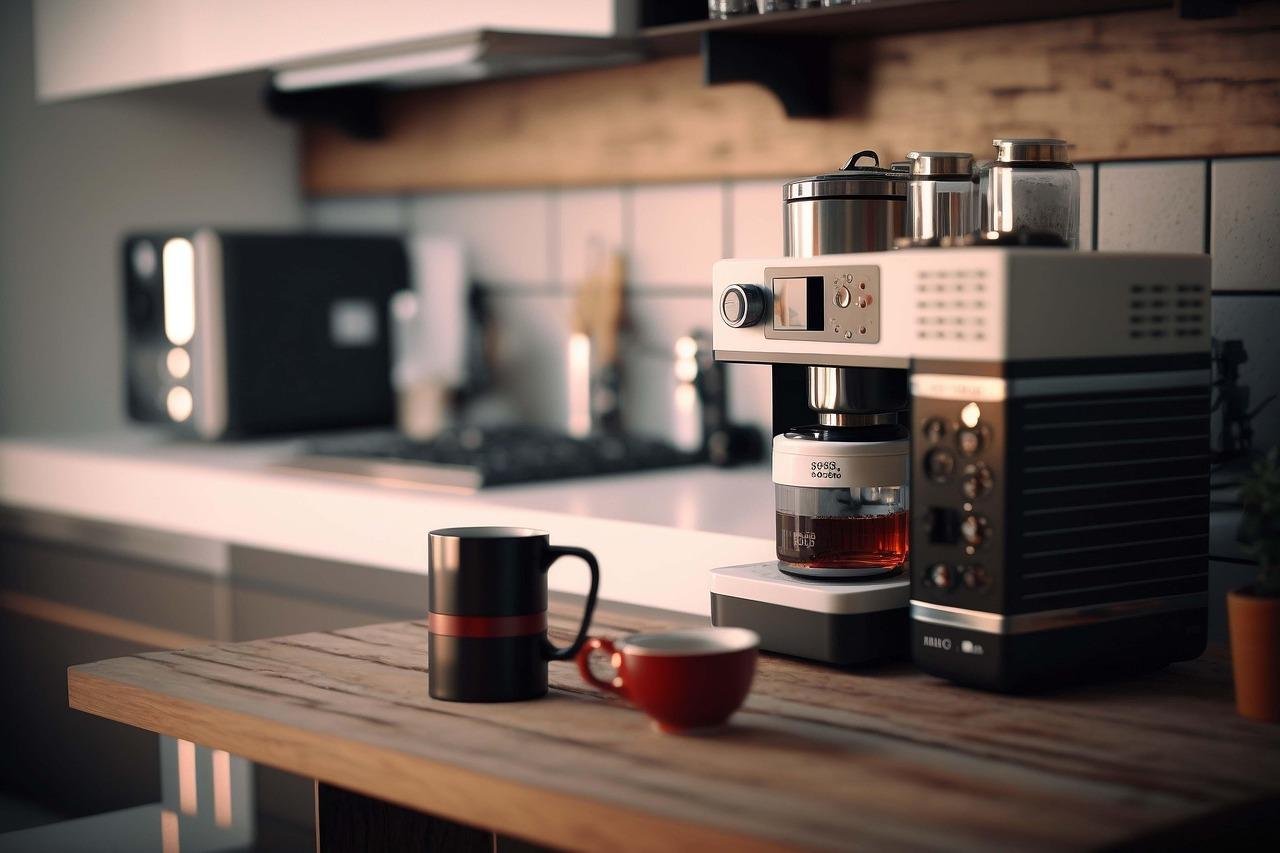How to Pick the Right Coffee Maker: A Buyer’s Guide

Coffee makers aren’t just appliances—they’re daily companions. A good coffee maker delivers not only convenience but consistency, flavor, and longevity. Whether you’re brewing one cup in the morning or a full pot for family or guests, selecting the right model makes all the difference. This guide helps you understand the types, features, and tips to choose a coffee maker that suits your lifestyle.
Understanding Types of Coffee Makers
Not all coffee makers are created equal. Here’s a breakdown of the major types and where each excels:
Drip / Filter Coffee Makers
This is perhaps the most familiar kind. Water is heated and dripped over coffee grounds held in a filter, allowing brewed coffee to collect in a carafe. Drip makers are ideal when you need several cups at once. They tend to be user friendly and consistent.
Single-Serve / Pod Machines
If you usually want one cup at a time, a single-serve or pod machine is ideal. These machines use premeasured pods or capsules to brew a single serving. They’re clean, quick, and reduce waste from brewing a full pot.
Espresso / Semi-Automatic Machines
Espresso machines force nearly boiling water at pressure through finely ground coffee. They produce concentrated shots of coffee suitable for lattes, cappuccinos, and more. Many models include steam wands or milk frothers.
Manual & Immersion Brewers
Devices like the French press, AeroPress, and pour-over brewers give you hands-on control. You manage grind, water temperature, and brew time directly. These are popular with coffee enthusiasts who want to experiment and fine-tune flavor.
Cold Brew & Specialty Brewers
Cold brew systems steep coffee grounds in cold water over extended periods, creating a smooth, less acidic brew. Other specialty brewers—like siphon or vacuum methods—offer novel approaches and distinctive flavor profiles.
What to Look for in a Coffee Maker
Choosing among coffee makers requires paying attention to features beyond just style. Here are important considerations:
Capacity & Demand
Do you usually brew one cup or multiple? If you drink coffee in batches or for groups, a drip or multi-cup machine makes sense. If you mostly drink one cup, go for a single-serve model for efficiency.
Temperature Control & Consistency
Stable water temperature during brewing ensures proper extraction and balanced flavor. Machines with dual boilers or better heating systems tend to produce better results.
Grinder Integration
Some coffee makers include built-in grinders. These let you brew fresh from whole beans, which often means better aroma and flavor control.
Milk & Frothing Options
If you enjoy lattes or cappuccinos, choose a model with a steam wand or automatic frother. Consider how easy it is to clean and maintain that feature.
Ease of Cleaning
Look for removable brew groups, dishwasher-safe components, and self-cleaning or descaling functionality. Frequent cleaning is essential to preserve flavor and function.
Build Quality & Materials
Stainless steel, durable plastics, and well-sealed components resist wear and corrosion. Cheap parts may degrade fast, especially with heat, water, and frequent use.
Warranty & Support
A solid warranty and replacement parts availability help you maintain your machine over years of use.
Featured Coffee Maker Options
Here are several models you might consider—each suited to different needs:
-
Philips HD7432/20 Fully Automatic Coffee Maker — A versatile automatic brewer with multiple settings and ease of use for daily convenience.
-
Wonderchef Regenta Espresso Coffee Machine — Compact and ideal for espresso lovers who also want cappuccinos in a home setup.
-
Morphy Richards Europa Xpresso 4‑Cup — Best for small spaces or single households wanting espresso in a minimal footprint.
-
Agaro Imperial Espresso Coffee Maker — A robust option with greater capacity and features for morning routines.
-
Croma 900 W 10‑Cup Manual Espresso Maker — Designed for larger servings with manual control and keep-warm function.
These examples illustrate different machine classes—automatic, espresso, manual—and can guide your selection process.
Brewing Tips & Best Practices
To get the most from any coffee maker:
Use freshly ground coffee just before brewing. For drip machines, pour cold, filtered water. Use proper coffee-to-water ratios for balanced extraction. Always maintain a wet edge when pouring or distributing water. For espresso, preheat your machine and purge steam lines before use. After each brew, flush or rinse parts to prevent old oils or buildup affecting taste later. Descale regularly to remove mineral deposits and maintain performance.
Maintenance & Care
A good coffee maker can last years if maintained properly:
Empty and rinse brew baskets daily. Clean removable parts regularly. Run descaling cycles as recommended (often every 3–6 months) to prevent mineral buildup. Use soft brushes to clean small crevices. Avoid leaving stagnant water in reservoirs overnight. Inspect gaskets, O-rings, and seals for wear and replace when needed. Proper care ensures consistent taste and avoids costly breakdowns.
- Art
- Causes
- Crafts
- Dance
- Drinks
- Film
- Fitness
- Food
- Игры
- Gardening
- Health
- Главная
- Literature
- Music
- Networking
- Другое
- Party
- Religion
- Shopping
- Sports
- Theater
- Wellness


